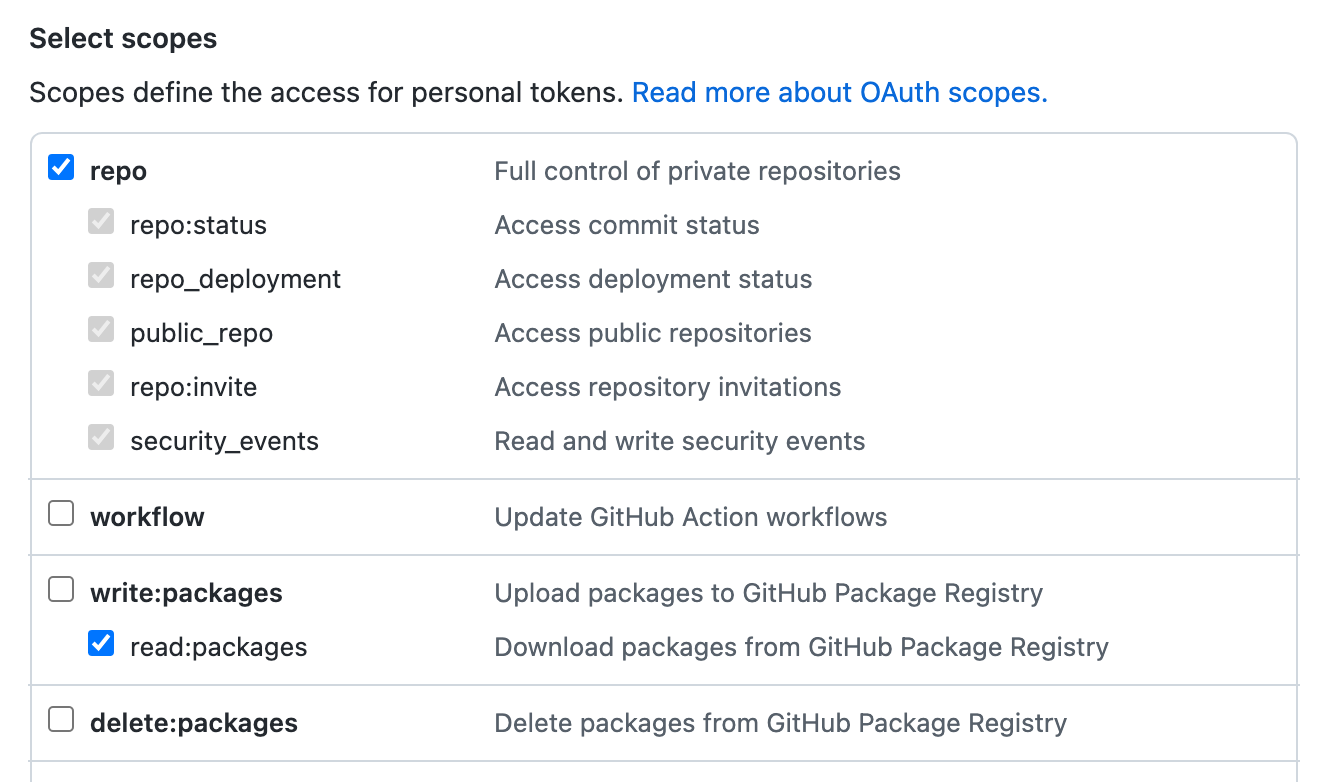By default, the GitHub Actions workflow for a prebuild configuration can only access its own repository contents. Your project may use additional resources, located elsewhere, to build the development environment.
Allowing a prebuild read access to external resources
You can configure read access to other GitHub repositories, with the same repository owner, by specifying permissions in the devcontainer.json file used by your prebuild configuration. For more information, see Managing access to other repositories within your codespace.
Note
- You can only authorize read permissions in this way, and the owner of the target repository must be the same as the owner of the repository for which you're creating a prebuild. For example, if you're creating a prebuild configuration for the
octo-org/octocatrepository, then you'll be able to grant read permissions for other repositories, such asocto-org/octodemo, if this is specified in thedevcontainer.jsonfile, and provided you have the permissions yourself. - You can't use wildcards to specify repositories. You must define permissions for each repository for which you want to grant access.
When you create or edit a prebuild configuration for a devcontainer.json file that sets up read access to other repositories with the same repository owner, you'll be prompted to grant these permissions when you click Create or Update. For more information, see Configuring prebuilds.
Allowing a prebuild write access to external resources
If your project requires write access to resources, or if the external resources reside in a repository with a different owner than the repository for which you are creating a prebuild configuration, you can use a personal access token to grant this access.
You will need to create a new personal account and then use this account to create a personal access token (classic) with the appropriate scopes.
-
Create a new personal account on GitHub.
Warning
Although you can generate the personal access token (classic) using your existing personal account, we strongly recommend creating a new account with access only to the target repositories required for your scenario. This is because the access token's
repositorypermission grants access to all of the repositories that the account has access to. For more information, see Creating an account on GitHub and Security hardening for GitHub Actions. -
Give the new account read access to the required repositories. For more information, see Managing an individual's access to an organization repository.
-
While signed into the new account, create a personal access token (classic) with the
reposcope. Optionally, if the prebuild will need to download packages from the GitHub Container registry, also select theread:packagesscope. For more information, see Managing your personal access tokens.
If the prebuild will use a package from the GitHub Container registry, you will need to either grant the new account access to the package or configure the package to inherit the access permissions of the repository you are prebuilding. For more information, see Configuring a package's access control and visibility.
-
Copy the token string. You will assign this to a Codespaces repository secret.
-
Sign back into the account that has admin access to the repository.
-
In the repository for which you want to create GitHub Codespaces prebuilds, create a new Codespaces repository secret called
CODESPACES_PREBUILD_TOKEN, giving it the value of the token you created and copied. For more information, see Managing development environment secrets for your repository or organization.
The personal access token will be used for all subsequent prebuilds created for your repository. Unlike other Codespaces repository secrets, the CODESPACES_PREBUILD_TOKEN secret is only used for prebuilding and will not be available for use in codespaces created from your repository.